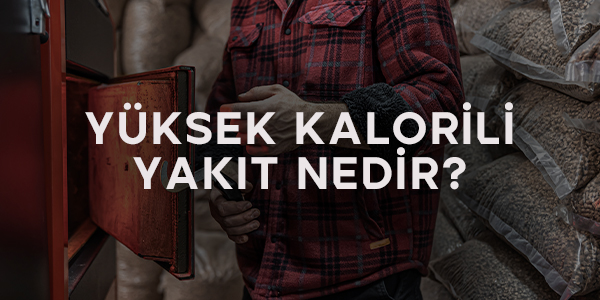
PELETİN KULLANIM ALANLARI NERELER?
- DETACHED HOUSING
- CENTRAL HEATING MASS HOUSING
- BAKERY, CAFE, RESTAURANTS
- STATE HOSPITALS
- GREENHOUSES
- Dairies and farms
- MASS USE AREAS SUCH AS BATH, HOTEL, MOSQUE etc.
- FACTORIES MAKING PROCESSES LIKE HEATING & DRYING
- CAT LITH

YÜKSEK KALORİLİ YAKIT NEDİR?
Pellet is a biomass energy, that is, a renewable energy source fuel. It is a resource with high security of supply as it is produced from domestic natural products and wastes.
It is an economical fuel, its cost is not directly affected by foreign currency like natural gas and petroleum fuels.
It produces less emissions when burned than fossil fuels. Since it is compressed under high pressure by removing its moisture, the ash content is around 1%. In other words; About 10 kg of ash comes out from 1 ton of pellets you burn. For example, ash-slag is formed in the range of 20% – 50% depending on the quality of coal. However, the ash formed as a result of combustion has the opportunity to be used as a natural fertilizer.
It is a more efficient fuel compared to the same amount of wood in terms of burning time and energy it provides. Pellet burning systems operate at a high level (95%) efficiency, just like condensing combi boilers, which allows you to get the highest efficiency with the least fuel.
The wood is turned into small powder as a result of the process of collecting the waste materials and passing them through the mill. Later, these powdered wood waste materials are dried in the oven and the humidity is reduced. The dried material is pressed under high pressure and turned into a pallet. The product coming out of the press is cooled and then used at the end of the packaging. As a result of the application of these processes, the combustion and energy efficiency of the same wood product is increased, making a great contribution to nature, the environment and the economy.
More ...
PELET ÇEVRE DOSTU MUDUR?
The wood is turned into small powder as a result of the process of collecting waste materials and passing them through the mill. Later, these powdered wood waste materials are dried in the oven and the humidity is reduced. The dried material is pressed under high pressure and turned into a pallet. The product coming out of the press is cooled and then it is ready for use at the end of the packaging. As a result of the application of these processes, the combustion and energy efficiency of the same wood product can be increased up to 3-4 times.
More ...
PELET AVANTAJLARI NELERDİR?
- Pellet fuel is a refined biomass.
- It is very easy to transport and store.
- It is a more efficient fuel compared to the same amount of wood in terms of burning time and energy it provides.
- It is cheaper than other fuels.
- Produced from 100% domestic, own resources.
- It is acceptable in terms of environment and human health. It is the cleanest burning pellet fuel among solid fuel systems.
- Very low amount of waste after use.
- It protects forests in the pellet production phase. Annual industrial wood and firewood production of the General Directorate of Forestry is 22 million cubic meters on average. This production is obtained from forest establishment, forest maintenance, forest regeneration, improvement and production activities.
- There is no danger of poisoning like coal.
- Combustion systems are easier to operate and maintain than other fueled plants.
- It does not require intervention in the boiler room when the electricity is cut off.

WHAT IS PELLET
Biomass is an important energy source as it constitutes the fourth largest energy source in the world. Many developed countries see bioenergy as the main energy source of the future.
It can be used in biomass heating and industrial combustion systems. Pellets are one of the widely used sources for heating.
The dictionary meaning of pellet, ball, cylinder, marble, as fuel; All kinds of wood, wood waste, forestry waste, agricultural waste, industrial wastes are small pieces used for the purpose of obtaining energy by increasing their density by drying and grinding and then pressing with high pressure and compressing.
It is possible to classify pellet fuel as wood pellets and agricultural waste pellets (agripellets). Standards have been established for the production, transportation and use of these products abroad, and there is no such standard in our country yet. In addition, the use of this product is considered within the scope of support by many countries abroad.
More ...